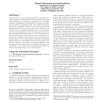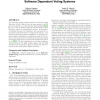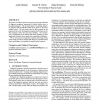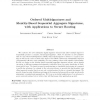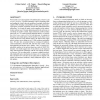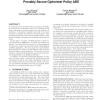CCS
2007
ACM
14 years 5 months ago
2007
ACM
CCS
2007
ACM
14 years 5 months ago
2007
ACM
The detection of covert timing channels is of increasing interest in light of recent practice on the exploitation of covert timing channels over the Internet. However, due to the ...
CCS
2007
ACM
14 years 5 months ago
2007
ACM
The electronic voting machines known as Direct Recording Electronic (DRE), that are used in many states in the US have been shown to contain security vulnerabilities [16, 9, 3]. O...
CCS
2007
ACM
14 years 5 months ago
2007
ACM
Browsers’ isolation mechanisms are critical to users’ safety and privacy on the web. Achieving proper isolations, however, is very difficult. Historical data show that even fo...
CCS
2007
ACM
14 years 5 months ago
2007
ACM
This paper studies an active underground economy which specializes in the commoditization of activities such as credit card fraud, identity theft, spamming, phishing, online crede...
CCS
2007
ACM
14 years 5 months ago
2007
ACM
We present an efficient protocol for privacy-preserving evaluation of diagnostic programs, represented as binary decision trees or branching programs. The protocol applies a bran...
CCS
2007
ACM
14 years 5 months ago
2007
ACM
We construct two new multiparty digital signature schemes that allow multiple signers to sequentially produce a compact, fixed-length signature. First, we introduce a new primiti...
CCS
2007
ACM
14 years 5 months ago
2007
ACM
We describe a new attack against web authentication, which we call dynamic pharming. Dynamic pharming works by hijacking DNS and sending the victim’s browser malicious Javascrip...
CCS
2007
ACM
14 years 5 months ago
2007
ACM
In ciphertext policy attribute-based encryption (CP-ABE), every secret key is associated with a set of attributes, and every ciphertext is associated with an access structure on a...
CCS
2007
ACM
14 years 5 months ago
2007
ACM
Researchers have previously looked into the problem of determining if a given set of security hardening measures can effectively make a networked system secure. Many of them also...

